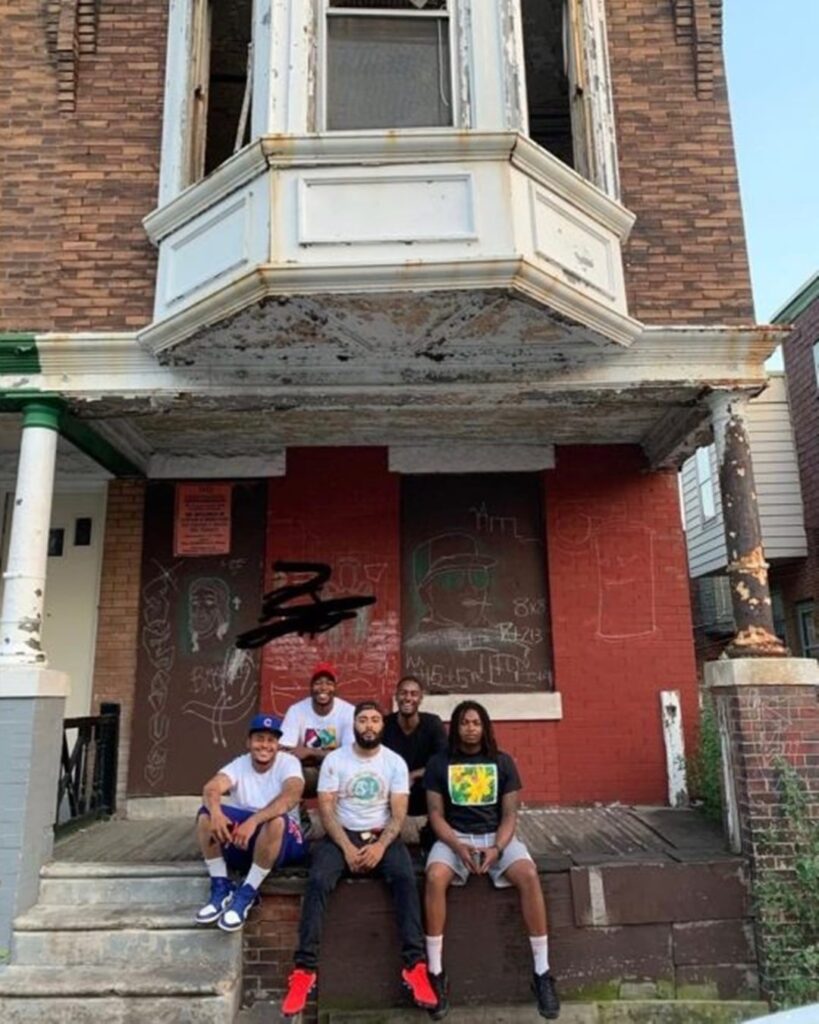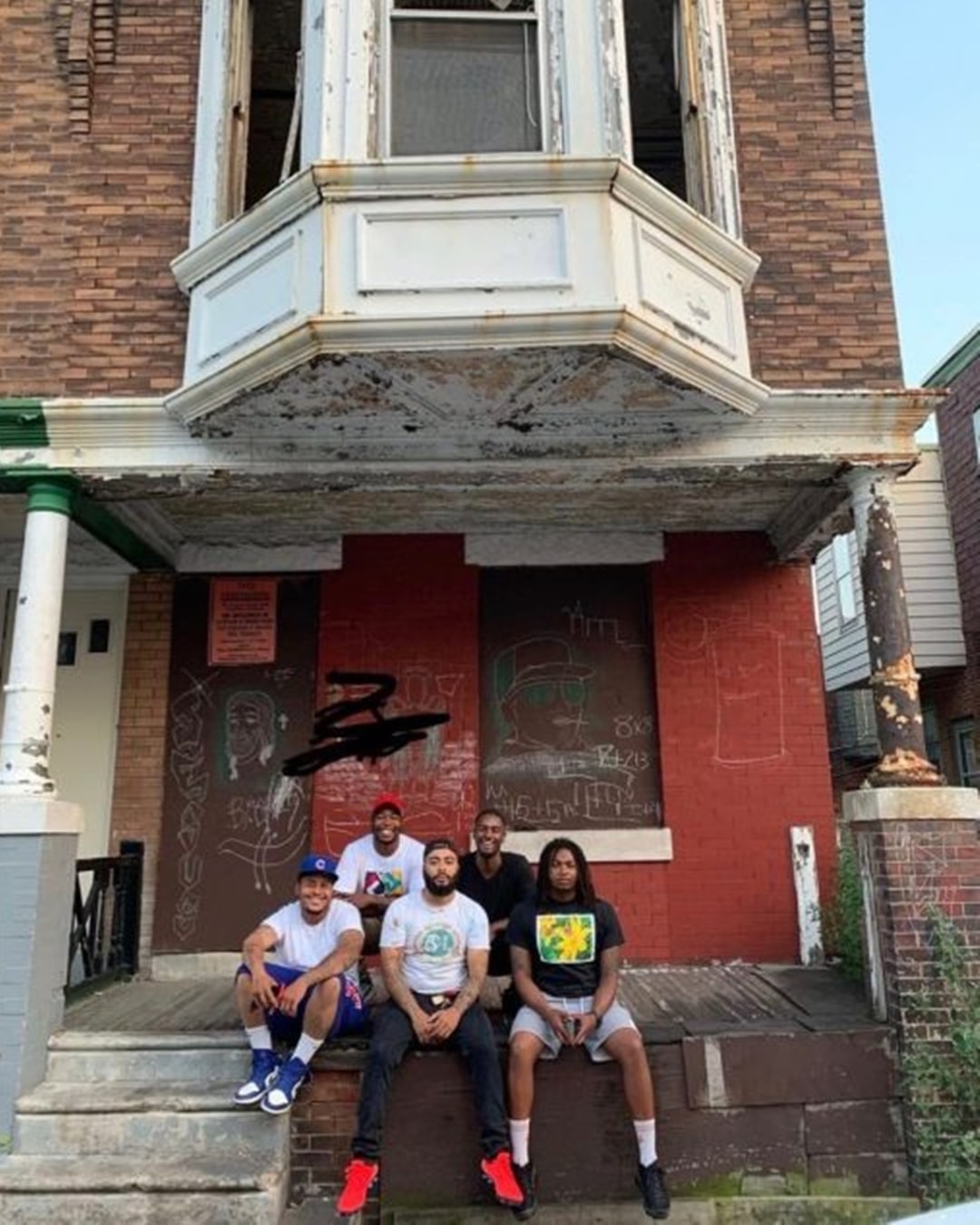Najee Hannigan, 26, had a simple idea: what if we each saved just $50 a week—not for sneakers or nights out, but for our future?
At first, his cousins and close friends hesitated. But together, they committed. Week after week, they put money aside. Birthdays, bills, temptations—it didn’t matter. They held each other accountable.
Two years later, their sacrifice paid off. Najee, Meqai, Ahmid, Tyree, and Darius pooled their savings and bought their very first property—a fixer-upper that marked the beginning of something bigger.
It wasn’t just about a house. It was proof. Proof that teamwork, trust, and consistency could turn small steps into real wealth. They didn’t stop there—they launched their own property management company, determined to grow, invest, and leave a legacy.
Their story spread, inspiring others in their community to believe that ownership was possible. That discipline, not luck, builds a future.
The journey from that single question to holding the keys to their first property was a masterclass in modern financial discipline and the untapped power of collective economics. In an age of instant gratification, where the pressure to spend is relentless, Najee and his friends chose a path of deliberate sacrifice. The $50 a week was not a trivial amount; for young men in their twenties, it represented tangible trade-offs. It meant cooking at home instead of eating out, skipping the latest fashion drop, and finding entertainment that didn’t drain their bank accounts. This required more than just willpower; it demanded a fundamental shift in mindset. They had to visualize a future reward that was far more valuable than any fleeting present comfort. Their shared goal became a shield against temptation. When one person felt the urge to splurge, the others were there to reinforce the mission, reminding them of the fixer-upper they hadn’t even seen yet, of the legacy they were building one small deposit at a time. This system of mutual accountability was their secret weapon, transforming the isolating act of saving into a team sport where every member’s success depended on the discipline of the group.
When the two years of diligent saving culminated in a significant down payment, their real education began. The decision to purchase a fixer-upper was strategic. It was a calculated move to enter the real estate market at a lower price point, allowing their capital to go further. More importantly, it was an investment in themselves. By taking on a property that required work, they were forced to learn the nuts and bolts of the real estate business from the ground up. They learned about construction costs, navigating permits, and the tangible value of “sweat equity.” Every wall they painted and every floor they repaired was not just a renovation; it was a hands-on lesson in how to create value where others saw only disrepair. This first property was their university, and the tuition was paid in hard work and collaboration. It was here they understood the difference between a liability and an asset. A new car or designer clothing depreciates the moment you acquire it, but this house, with every improvement, was an asset that was appreciating in value, actively working to build their financial future even while they slept.
The launch of their property management company was the logical and brilliant next step in their wealth-building journey. Owning a single property was an achievement; creating a system to manage and scale their investments was the beginning of an empire. This move demonstrated a sophisticated understanding of the real estate market. They recognized that property ownership comes with its own set of challenges: finding tenants, handling maintenance, and managing finances. By creating their own company, they vertically integrated their operations. They were no longer just landlords; they were entrepreneurs building a brand. This venture allowed them to control the quality of their investment, generate an additional stream of income through management fees, and build a scalable model that could be applied to future properties. They were creating a self-sustaining ecosystem where their initial investment would not only grow but also fund the acquisition of new assets. This transition from savers to investors to business owners in such a short period is a powerful testament to their vision and their refusal to rest on their initial success.
Perhaps the most profound impact of their story, however, is not measured in square footage or rental income, but in the ripple effect it created within their community. Their success demystified the concept of real estate investing, making it feel accessible and achievable for people who may have previously seen it as a world reserved for the already wealthy. They became living proof that generational wealth isn’t something you have to be born into; it’s something you can build with foresight, strategy, and unwavering teamwork. Their story challenges the pervasive narrative that financial success is a product of individual genius or a lucky break. Instead, they offer a blueprint centered on community and shared prosperity. They are showing their peers that by pooling resources—whether it’s money, skills, or knowledge—a group can achieve what an individual might find impossible. This model of group economics is a powerful tool for community empowerment, providing a pathway to ownership and financial sovereignty. Najee, Meqai, Ahmid, Tyree, and Darius are not just building a portfolio of properties; they are building a legacy of possibility, inspiring a new generation to stop asking “why me?” and start asking “why not us?” Their journey, which began with a simple, almost humble goal of saving $50 a week, has become a powerful, replicable model for anyone willing to trade short-term wants for long-term freedom.

Najee Hannigan, 26, had a simple idea: what if we each saved just $50 a week—not for sneakers or nights out, but for our future? At first, his cousins and close friends hesitated. But together, they committed. Week after week, they put money aside. Birthdays, bills, temptations—it didn’t matter. They held each other accountable. Two years later, their sacrifice paid off. Najee, Meqai, Ahmid, Tyree, and Darius pooled their savings and bought their very first property—a fixer-upper that marked the beginning of something bigger. It wasn’t just about a house. It was proof. Proof that teamwork, trust, and consistency could turn small steps into real wealth. They didn’t stop there—they launched their own property management company, determined to grow, invest, and leave a legacy. Their story spread, inspiring others in their community to believe that ownership was possible. That discipline, not luck, builds a future. And it all started with one question: What if we saved a little, together?













